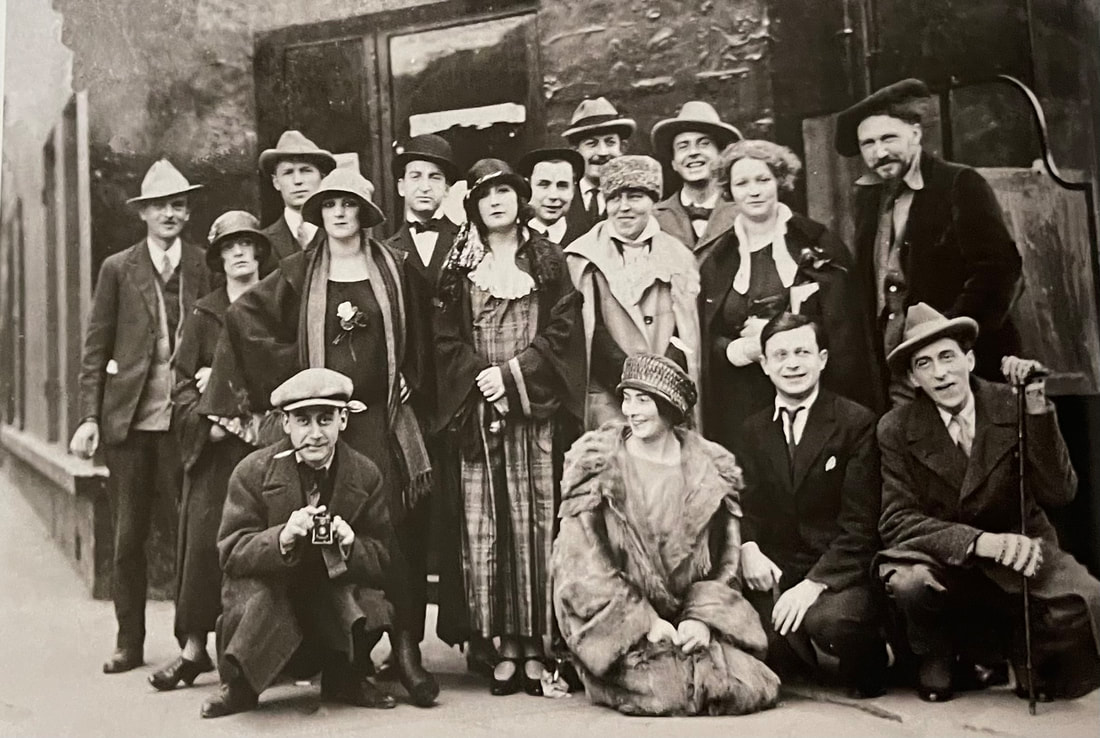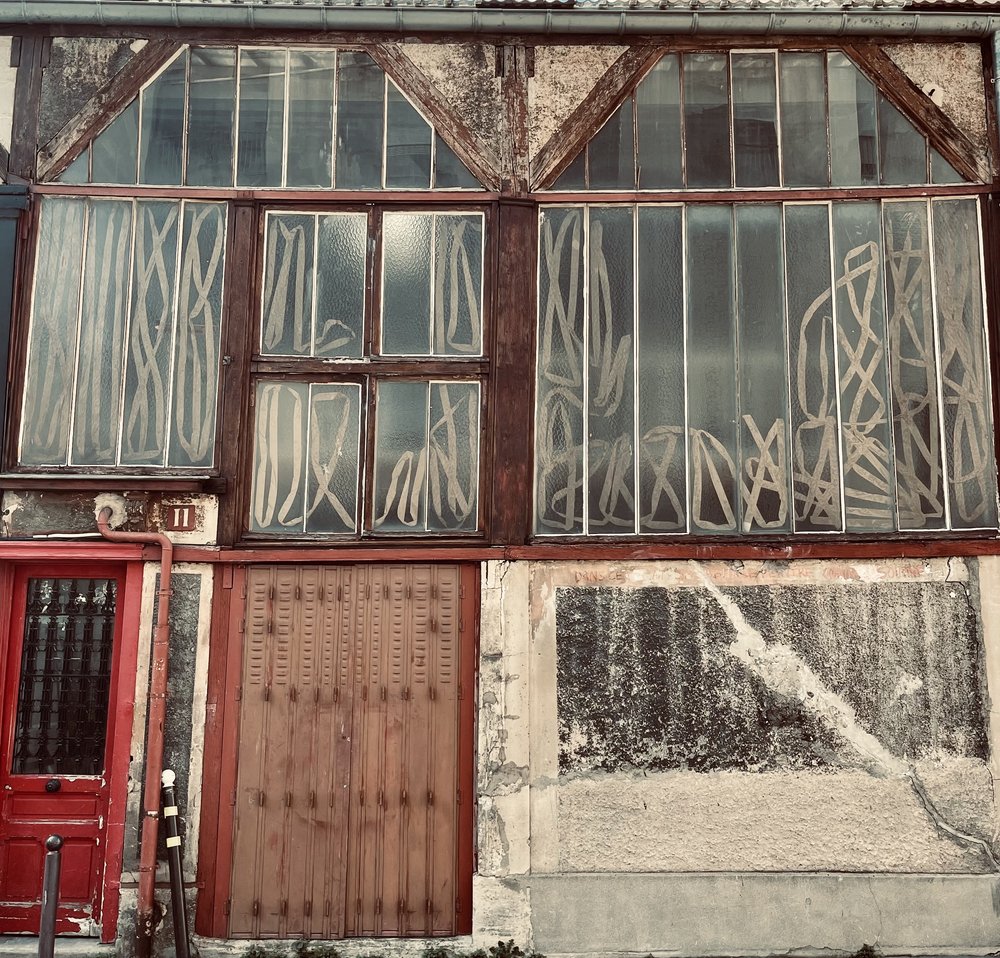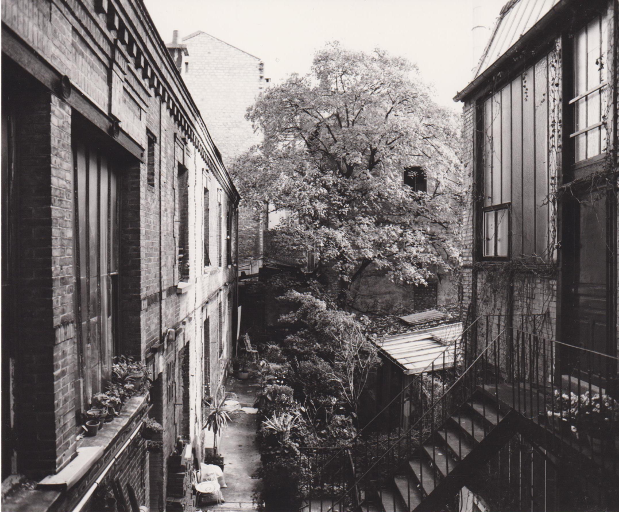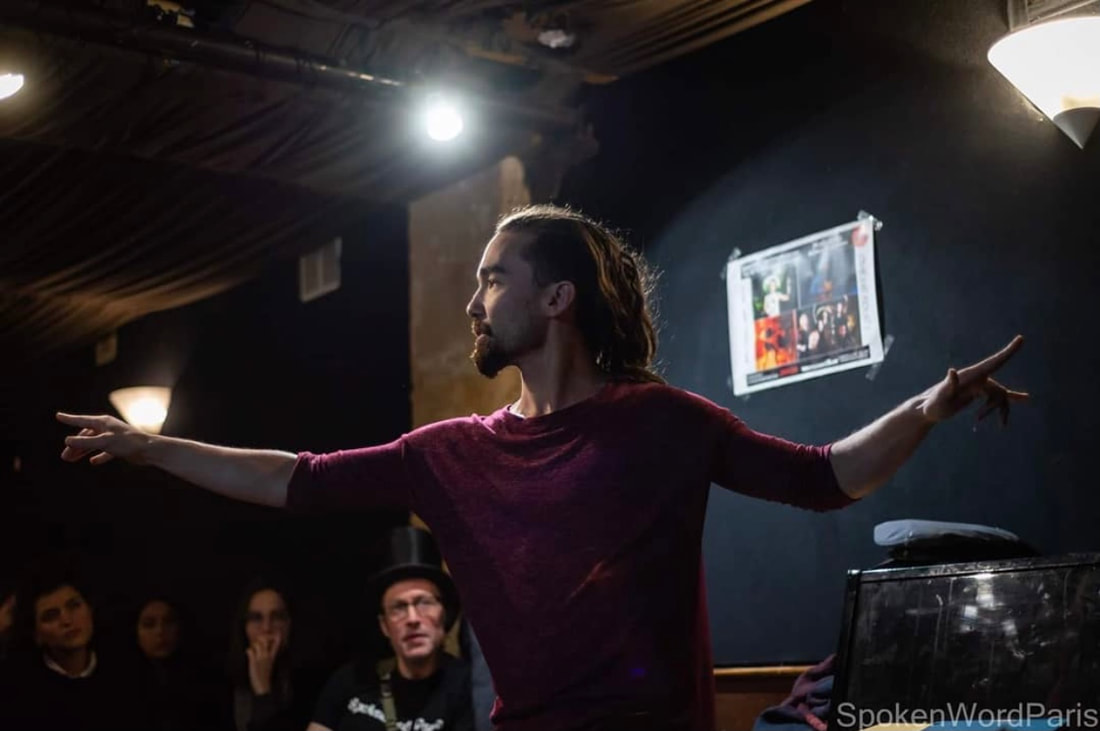It is very difficult to specify what foreigners are borrowing from us, and what we are borrowing from them. On January 27th, 1925, the art critic André Warnod wrote these words in the Comoedia, thus encapsulating for the first time the complexity of the stakes within what he coined “École de Paris”. In the 1920s, xenophobia infiltrated the Parisian art scene. Indeed, many exhibition reviews considered that foreign artists were being granted excessive visibility. Although a verdict for the Salon des Indépendants of 1922 was to favour artists installations according to alphabetical order, in 1924, the management committee opted for a segregation by nationality, thus separating French and foreign artists. This chauvinist move scandalized the participants and led some to withdraw such as Foujita, Lipchitz, Zadkine, Léger, arousing controversy in the press. Provoked by this event, the École de Paris stemmed from a desire to house the entire cosmopolitan artistic community that came to settle in Paris at the turn of the 20th century, thus igniting recognition of their involvement, and the impact of foreign artists on the French creative scene. In spite of Modernism's foundation in agitation and scandal, this “École” is not a movement. It does not embody a unified aesthetic. It does not seek a plastic norm; it is in no way legislated. This is with exception in its hope for emancipation, its battle against discrimination, its intrinsic feelings of rejection in systems proliferating freedoms of creation and of the individual. Jules Pascin, Amedeo Modigliani, Chaïm Soutine, Constantin Brancusi, Sonia Delaunay, Marc Chagall or Chana Orloff, despite their visual eclecticism, are linked to the stories and to the common ideals of a generation of international artists. Despite ‘École de Paris’ quickly slipping into the realm of positive discrimination, this multicultural and multidisciplinary meeting of creators, painters, sculptors, writers and photographers provided fertile ground for some of the most influential works of art of the 20th century. Although seemingly judged as superficial, this association of artists encouraged a positive change of attitudes towards academicism – a fruitful osmosis. This creative energy brought about a clash of styles, languages and cultures. This was a real testimony to the power of integration from the artistic community at its peak. Image by an anonymous photographer capturing the prominent members of the artistic community of Montparnasse, Paris, 1923 However, the “École de Paris” was born in turmoil and consequently challenged. No one could prevent the effects of war, a major economic crisis, and that the fear of the other would take over the features of the other. The rise of nationalism was both the motor as well as the adversary of the essence of “École de Paris” – provoking a return to the stability of ancient traditions. The uninterrupted innovation of art at the heart of turbulence appeared uncertain whilst beholding a permanent glimmer of hope.
Questions persist on the ability for Paris to establish itself as a leader in the renewal of French culture and its role on the international stage. This was due to the exposure of the fragility of its democracy, and the reigning doubt on its unifying ideologies. Indeed, how can we identify a creation representative of human value, when all aspirations to humanism are knocked down by global catastrophes instigated by humans? How to legitimize and guide the artistic productions created within our destructive societies? Do artists have any agency at all? History and its questions repeat themselves: art is continually undergoing the effects of societal instabilities. Therefore, recognizing history and creation as powers we learn from, are necessary. The past and the “École de Paris”, are not archives to be placed in quarantine. The present is an active history that art proves intelligible. The avant-gardes of yesterday and the explorations of today must be recognized as tools for understanding our societies and actors of historical, political, cultural, and societal change. Beyond the experience of personal aesthetics, art carries a civic responsibility, a purpose of creative unity in the face of adversity and chaos. By considering art through its relationship to society and community, perhaps we are allowing poets, artists, and thinkers to exercise a civilizing function. That is, to participate in a revitalization of humanity which resonates with relevance. What has been called modernity is therefore not solely characterized by its aesthetics but more importantly its ability to distill the old into the new, to break down the dichotomies of the past and the modern, of the grounded and the distant, from the self and from the other. The modernity and contemporaneity are not tabula rasa but states of availability, transversality, and uniqueness. Let us retain from the “École de Paris” the revolutionary potential of the artistic community as an organic synthesis of tradition and innovation. Let's grant art the freedom, plurality, and vitality it requires to forge new bonds that unite individual human experience and collective existences. Internationalization is a mutual process; with culture as its medium. Written in French by Juliette Gaufreteau, Sorbonne University Translation by Lily Pouydebasque, University College London
0 Comments
by Matt Jones
First, a woman’s voice and a haunting song, then a screech as she pulls the scotch tape, flattens it against the atelier’s immense windows. Methodical, the tape zigzags across the panes like lightning, or snakes. She is Maryna Semenkova, a photographer and performance artist; she explains that when Putin’s forces invaded, the Ukrainian government ordered the people to tape their windows, lest the bomb blasts turn the glass into shrapnel. International conflicts, invasions, senseless massacres: if only we had a stronger torch than art for these dark depths. Yet Atelier 11 has been sheltering creatives for a hundred and fifty years. World famous artists, that rocked the foundations of their craft, and influenced entire generations. Artists like Amedeo Modigliani and Chaïm Soutine: mismatched brothers of la bohème, one the pinnacle of manners, the other impatiently tapping his fork on the plate when the waiter was slow. Art is more than a torch; it’s also a shield. In the absence of state protection and sponsorship, Atelier 11 has always been defended by the very artists it harbours – when Maryna tapes the windows, she participates in a longer arc of artistic guardians who refuse to allow Atelier 11, also known as the historic Cité Falguière, to be absorbed into apartment blocks, heritage forgotten. Read full article on Paris Lit Up blog - by Clare Patrick, L'AiR Arts guest curator and aluma resident (South Africa), as part of the collaborative endeavor for Atelier 11, backed by Artpool.
Paris, for me, feels hyper-real. From the history-washed buildings and precise pavement markers to the golden light in shop windows and the crazy array of flowers growing everywhere. In Paris, the Surrealists turned to its grime, interrogating its sicknesses, its erotic grit and upeneded its lanscapes. The impressionists found light and cats and picnics and Sundays in the park. Picasso, Klein, Matisse and Orloff wandered the very streets I walked down, visiting similar shops, perhaps they even watched Satie perform in the cramped little theatre I sat in, where words washed over me allowing for a puzzle-piece translation, surely as bizarre as he would have wished it. On Site is a call to return, to resume and reconnect after years (which we hoped would be weeks) of being dislocated. To return to Paris and the creative possibilities it evokes. The On Site artists and their practises span continents and time zones, mediums and techniques. In this NFT space, we are all fresh and inspired to connect and reimagine. To rethink and reconsider our own spaces and imaginings. From postcard-sized experiments, to infinitely generative forms, we explore and offer our findings in support of history and thinking to the future. In working digitally, the artworks take on new forms and potentials: buzzing and blinking like Barbara Wildenboer's, glowing and pushing like Juan Hinojosa's, shifting and ripping like Valentina Ezyaguirre's, circling and holding in Yen Ha's and exploring and expanding in both Una Laurencic and Yong Hee Kim. On Site is an effort to support and encourage the continuation of intercultural exchange, partnership and engagement at Atelier 11, the new home of L'AiR Arts. The home that has housed the stories of so many artists before, and to those we can't wait to help welcome in years to come.
All proceeds of the NFT fundraiser will go towards restoration of Atelier 11 - L'AiR Arts residency space in Paris. by Mayumi Lashbrook (Canada), alumna of Multidisciplinary Residency, 2020 and Virtual Residency, 2021. In my experience in every creation process I’ve been part of, there’s a cracking moment. A period of time where you know you’re digging deep. Excavating the emotional, charged, tense grit of the human experience. You dig down into the soil of the self hoping to find a gleaming thought to share that could offer profound change. Each week of our online residency has felt this way. We’ve all said and felt in some way that this isn’t a topic that we alone could bear. Even though each of our practises are built on a foundation of seeking liberation. Through the group’s diverse experiences and camaraderie, we’ve found safe practises to look at the harrowing truths of movement of humans and commodities. I am deeply grateful for this. I am pushed forward by these discoveries and many more… The naming of borders I place on myself or have been placed on me. The recognition of the borders others live within that don’t enclose me and never will. There is a fairness committee to cap earnings in sports yet no such regulations exist for the richest people in the world. The subtle or not so subtle differences between forced and enforced migration. Language is the primary means to accessing power. Language exists because our senses alone are imperfect communicators, we utilize language to fill in the missing information. Trees communicate to each other offering warnings and triggering mast fruiting; language used for communal generosity. The Queen may be the only person on the planet who requires no passport. The Indigneous creation story of Skywoman tells that she, the original woman herself, was an immigrant. I recognize we’ve picked a limitless topic. One that crosses over many areas, experiences and faultlines. It was brought up about the idea that change is like a boat going through water. It simultaneously moves forward and backwards, ripples emanating in two directions of opposing action. I expect our impact to be of the same nature. I move looking for both, a way of staying rooted in the past while looking ahead to the possible future. A sense of implosion and explosion, safety and danger, progression and regression. And yet we keep moving through. Together. Borders, Borderlands and Crossings
A work-in-progress showing exploring the movement of precious metals, seeds, and humans across borders, both imagined and real. Join in to share your thoughts and reflections as L'AiR Arts four international alumni: Kunji Mark Ikeda (Canada), Shireen Ikramullah Khan (Netherlands), Mayumi Lashbrook (Canada) and Eric Lawrence Taylor (USA) connect for a 7-week multi-disciplinary virtual residency, culminating in a public work-in-progress showing. Date: Saturday August 7th Time: 11:00am MT / 1:00pm ET / 7:00pm CEST Location: Online through Zoom, FREE! For more information and to register click here. by Kunji Ikeda (Canada), Alumn of Multidisciplinary Residency, 2020 and Virtual Residency, 2021. I’ve encountered this idea in multiple artistic practices: - voice work (rooting into deep breathe to release the higher falsetto) - dance work (sending energy down in order to release the upper body into a pirouette) and hyper-present within this work - mutual safety and trust. I wouldn’t want to enter into a research and creation residency of this nature with just anyone, my talented and passionate co-creators and I have continually proven to each other that there is deep care for one another. It’s a beautiful process of laughing at ourselves, shaking our fists at the clouds, and crying over spilt energy. We’ve been able to console and confront all the ideas and processes that you can read about in previous posts. Rooting down into each other to see where we can fly I have felt an artistic circular routine made up of periods of intense research, work, and rest. Without one of those within a pattern I feel at a disadvantage to a creative state. This time together has been an invigorating time of research and work with spacious rest in between our meetings. We’re able to start to shake loose some artistic thoughts and ideas that are too big for me alone. If I tried on my own to research these huge, tiring, political machinations I would be overwhelmed and turn bitter towards my process and ultimately my failure. In this community of unique thought and discussion, there have been floods of revelation, connection, and delight that cannot exist in a vacuum of my own thoughts and experiences; my own lens isn’t wide enough. Did we know what we were getting ourselves into? In theory, yes. We knew it would be revelatory, thought provoking, and that we would each come away with our own personal gems and seeds to continue working towards. In our complex multidis, multigeneration, multicultural community we’ve each had the opportunity to inspire and be inspired with one another. Did we know what we were getting ourselves into? Not in the slightest. Borders, Borderlands and Crossings
A work-in-progress showing exploring the movement of precious metals, seeds, and humans across borders, both imagined and real. Join in to share your thoughts and reflections as L'AiR Arts four international alumni: Kunji Mark Ikeda (Canada), Shireen Ikramullah Khan (Netherlands), Mayumi Lashbrook (Canada) and Eric Lawrence Taylor (USA) connect for a 7-week multi-disciplinary virtual residency, culminating in a public work-in-progress showing. Date: Saturday August 7th Time: 11:00am MT / 1:00pm ET / 7:00pm CEST Location: Online through Zoom, FREE! For more information and to register click here. |
keep in Touch!News and resources shared on this community platform are meant to further the engagement, stimulate active thinking, and create pathways for knowledge transfer and cross-cultural exchange. Archives
April 2024
CategoriesCover Image: L'AiR Arts residents, Multidisciplinary Program, January 2020
|





 RSS Feed
RSS Feed